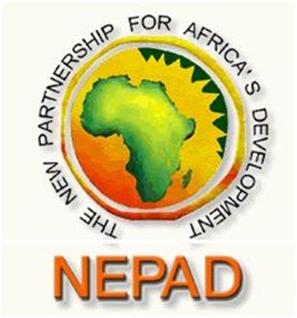Africa’s Own Mega-Plans. Since independence, African leaders have announced all sorts of grandiose initiatives and mega-plans at various summits. Nothing subsequently was heard of them after the summits: The Lagos Plan of Action (1980); the African Priority Program for Economic Recovery (1985); the African Alternative Framework to Structural Adjustment (1989), the Abuja Treaty (1991) and others.
In the late 1980s, there was much excitement about the creation of the African economic community. Nothing was heard of it since. At the thirty-fifth OAU Summit in Algiers (July 15, 1999), President Thabo Mbeki of South Africa shocked the delegates by reminding them that little has been done to implement the 1991 Treaty of Abuja, which established an African economic community (The Washington Times, July 15, 1999; p.A14).There were other grand initiatives too: The Algerian and South African initiative, the Millennium Partnership for the African Recovery (MAP), and the Omega Plan, spearheaded by President Abdoulaye Wade of Senegal. They were finally integrated into a single plan called the Compact for African Recovery (COMPACT) by the Economic Commission for Africa (ECA).
Subsequently, COMPACT metastasized into the New Partnership for Africa’s Development (NEPAD). All these plans committed African leaders to democratic ideals; establishment of peace, law, and order; respect for human rights and basic freedoms; and a better management of their economies, among other things. They also entreated the international community, especially Western nations, to work in partnership with African leaders to help them to realize their goals.
The New Partnership for Africa’s Development (NEPAD) — a synthesis of these plans and touted by Presidents Thabo Mbeki of South Africa, Olusegun Obasanjo of Nigeria, and Abdoulaye Wade of Senegal — was presented at the G-8 Summit in Genoa in 2001 for Western financial support. NEPAD sought $64 billion in Western investments in Africa. The official NEPAD document undertakes “to respect the global standards of democracy, whose core components include political pluralism, allowing for the existence of several political parties and workers’ unions, fair, open, free and democratic elections periodically organized to enable the populace to choose their leaders freely”.
It also includes a “peer review mechanism” by which African leaders who misrule their countries would be subject to criticism by fellow African leaders according to commonly agreed standards. NEPAD was trumpeted as “Africa’s own initiative”, “Africa’s Plan”, “African crafted”, and therefore “African owned”. While African leaders deserve credit for at least making the effort to craft an “African initiative”, NEPAD was fatally flawed in many ways.
First, its pitch and analysis were faulty. Playing the guilt trip card, NEPAD claimed that the impoverishment of Africa has been “accentuated” by the “legacy of colonialism” and other historical “legacies” such as the cold war and the unjust “international economic system”. Colonialism subverted Africa’s “traditional structures, institutions and values”, creating an economy “subservient to the economic and political needs of the imperial powers” (para 21). Africa has been integrated into the world economy as “supplier of cheap labour and raw materials, draining Africa’s resources rather than industrializing Africa” (para 21). Colonialism, according to NEPAD, retarded the development of an entrepreneurial and middle class with managerial capability. At independence, Africa inherited a “weak capitalist class”, which explains the “weak accumulation process, weak states and dysfunctional economies” (para 22).
Further, insufficient “rate of accumulation” in the postcolonial period led to “patronage and corruption”. (para 25) The “vicious circle” of “economic decline and poor governance” has confirmed Africa’s peripheral and diminishing role and “marginalization”. (para 26). More recent reasons for Africa’s dire condition include “its continued marginalization from the globalization process” .(para 2)
The analysis was not balanced. It was too steeped in the “externalist orthodoxy” that nearly everything that went wrong in Africa was due to external factors such as colonialism, imperialism, the slave trade and hostile external factors, among others. While slavery and colonialism did harm Africa, the analysis ignored the equally important role played by internal factors such as bad leadership, senseless civil wars, corruption, economic mismanagement and military vandalism. The externalist card has excessively been overplayed by African leaders to conceal their own failures.
The second was the internal inconsistency of the Plan. NEPAD talked of “self-reliance” and argues forcefully that Africans must be “masters of their own destiny”. It railed against “the credit and aid binomial” that has led to a “debt deadlock”, and perpetual rescheduling (para 3). Yet, NEPAD seemed incapable of breaking out of this foreign aid-dependency trap. It said that Africa needed to secure more aid and more credit (para 145) but that the “bulk” of Africa’s capital needs up to the year 2015 “will have to come from outside Africa” (para 147).
Third, it turned out NEPAD was not “African” after all; it was modelled after a foreign plan: The U.S. Marshall Aid Plan, which rebuilt Europe after World War II. How could NEPAD be “African crafted” when it is a copy of the Marshall Aid Plan? Or how could Africa claim ownership over someone else’s idea?
Speaking at a forum in Nairobi, Prof. Adedeji Adebayo, the UN undersecretary general and executive secretary of the ECA, said that foreign aid had failed to solve Africa’s problems for four decades and was not about to. “No Marshal Plan will work in Africa’s underdeveloped markets. It worked in Germany because of Germans’ hard work and intellectual resources. Africa requires building anew; not rehabilitation or reconstruction,” said Adedeji (East African, [Nairobi], May 6, 2002).
Fourth and more serious was the blatant dishonesty and double-speak that infused NEPAD rhetoric. Speaking at the four-day OAU Civil Society conference (June 10 – 14, 2002), President Obasanjo of Nigeria noted that the involvement of civil organisations was necessary to make NEPAD successful. “I would like to reiterate that much of what Africa has today gained in the areas of political and social sphere have been derived from the direct influence of Civil Society Organizations (CSOs). This attitude should continue”, he added (Daily Monitor [Addis Ababa], June 14, 2002. Web posted at All Africa). Prime Minister Meles Zenawi of Ethiopia also weighed in, saying that the role of civil society is essential in making sustainable development in Africa. Meles noted that the success of NEPAD lies in the collective efforts of all Africans at the grass-root levels (Daily Monitor [Addis Ababa], June 14, 2002). NEPAD also claimed to be “people-oriented”. Yet, the reality was totally different.
No civic group, church, political party, parliament, or democratic body took part in its formulation. Only a small coterie of African leaders deliberated on the document, excluding the political leadership of the rest of Africa. On Jan 9, 2001, representatives of some 200 social movements, organizations, and institutions meeting in Bamako, Mali, issued “The Bamako Declaration”, which strongly condemned the lack of consultation with civic society. Another joust came in March 2002, when the Southern African Catholic Bishops Conference (SACBC) slammed NEPAD, calling the plan “ambiguous” and some of its proposals “dubious”. The bishops averred that “NEPAD may not achieve its purpose because of lack of consultation with those the plan would affect” (Mail and Guardian, [Johannesburg], March 8, 2002).
Overall, NEPAD was an unmitigated failure. President Abdoulaye Wade of Senegal, one of the chief architects of NEPAD, expressed the same view. During a visit to Tehran, Iran, in June 2006, he said the initiative had not produced results and needed a new lease of life. “NEPAD has failed. We did not choose the right people, they are not managers able to complete projects. NEPAD has not built a single mile of road,” he said.
In 2001, fewer than 14 of the 53 African countries were democratic; about 15 today. Never mind the absurdity of dictators standing in judgment of other despots. Even before the PRM was launched, there was backpedalling. President Mbeki of South Africa was reticent on how to implement peer review. “He talked vaguely about market reaction to the reviews, and a system of credit ratings for participating countries. Zambia’s Levy Mwanawasa, who was elected in dubious circumstances in Jan 2002, argued that `peer review must not be about isolation.’ And Mozambique’s Joaquim Chissano said it was too early to talk of peer pressure, even on countries as badly governed as Zimbabwe” (The Economist, June 22, 2002; p.44).
When the peer review mechanism was formally launched at the March 2003 Abuja meeting, it was “intended as a voluntary ‘self-monitoring’ system by which participating African countries would subject themselves to ongoing examination by other Africans in such priority areas as peace and security, democracy and political governance, and economic and corporate management” (Africa Recovery, May 2003; p.8). At the Abuja meeting, only 10 out of 53 African countries officially acceded to the PRM. Two years later, “Out of 53 members of the AU, only 23 have signed the Peer Review Protocol. Not even the shining example of democracy in Africa, Botswana, was prepared to subject itself to the Peer Review mechanism scrutiny . . . Of the 23 signatories only two, Rwanda and Ghana, underwent the PR process” (.Mmegi/The Reporter, Gaborone, July 12, 2005; web posted). Obviously, such a mechanism would not work if only the “good guys” signed up and there are no costs to the “bad guys” for nonparticipation.

